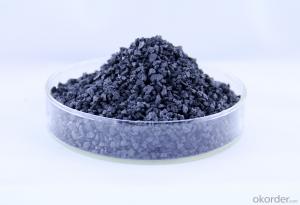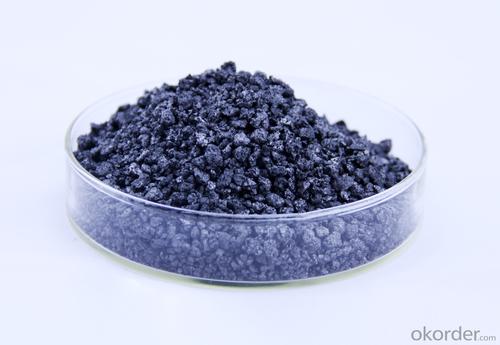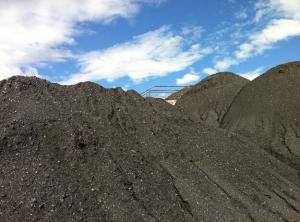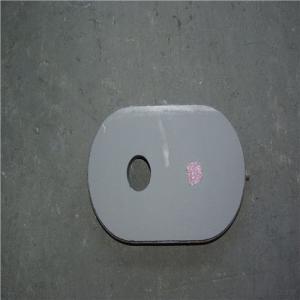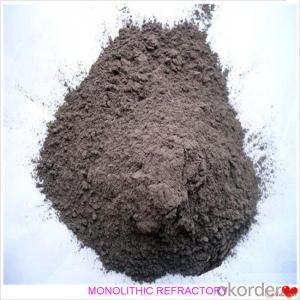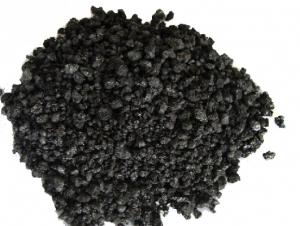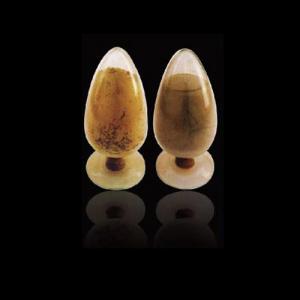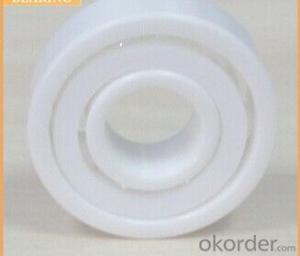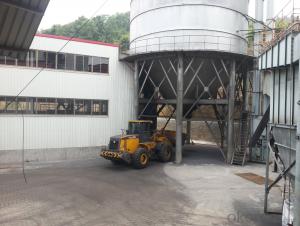Monolithic Refractories for Iron and Steel Industry - Calcined Petroleum Coke 1-5mm FC:98.5%min
- Loading Port:
- Shekou
- Payment Terms:
- TT OR LC
- Min Order Qty:
- 20 m.t
- Supply Capability:
- 1000 m.t/month
OKorder Service Pledge
OKorder Financial Service
You Might Also Like
Factory Background
The factory is majorly running and operating carbon additive (pitch coke, calcined petroleum coke and anthracite), low nitrogen carbon additive, and brake pad making material. Company is the long term supplier of Sinosteel Corporation, Shanghai Carbon Corporation, the plant of SGL Group the Carbon Company in China and some largest special carbon products producing plants.
YUAI also supplies huge amout of high quality carbon additive and graphite carbon additive to steel plants, foundries and ferrotungsten plants. YUAI has been assigned by BAO STEEL as the only organization for processing pitch coke for export purpose. The group’s major products are constantly exported to Japan, Korea, Malaysia, South East Asia countries, Europe and America, which receive praises by our consumers.
The group has invested numbers of calcinators in Anhui China to ensure the capability of producing and processing huge amount of carbon additive. Further investment is on process. According to the orders from customers, YUAI is able to processing and providing different specifications of carbon additive and other products. To provide best quality of products and to offer customers most satisfied service is YUAI’s operating objectives.
Calcined Petroleum Coke
FC:98.5%min,
S:0.5%max
A:0.8%max
V:0.7%max
Mositure:0.5%max
Size:1-5mm
This product is mainly used in steel-making and foundry. Calcined Petroleum Coke
Calcined Petroleum Coke comes from delayed coke which extracted from oil refinery. Although Calcined Petroleum Coke contains a little bit higher level of sulfur and nitrogen than pitch coke, the price advantage still makes it widely used during steel-making and founding as a kind of carbon additive/carburant.
Packaging & Delivery
Packaging Detail:25kg paper bag into 1t weaving bag 5kg, 10kg and 20kg weaving bag into 1t weaving bag 25kg weaving bag put on pallet covered with entanglement wrap product direct into packing bag 25kg paper bag put on pallet covered with entanglement Wrap 25kg weaving bag into 1t weaving bag.
Delivery Details: 7 days
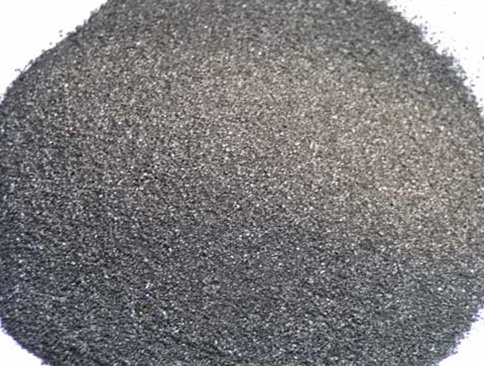

- Q: How do monolithic refractories contribute to the overall efficiency of iron and steel production?
- Monolithic refractories play a crucial role in enhancing the overall efficiency of iron and steel production. These refractories, which are made from a single material, provide exceptional thermal insulation, resistance to high temperatures, and excellent mechanical strength. By lining the furnaces, ladles, and other equipment used in the production process, monolithic refractories help in maintaining and regulating the required high temperatures for melting, refining, and shaping iron and steel. This insulation reduces heat loss, minimizes energy consumption, and ensures a more efficient and cost-effective production process. Additionally, the mechanical strength of monolithic refractories allows for better protection against wear and tear, resulting in increased equipment lifespan and reduced downtime for repairs and maintenance. Overall, the use of monolithic refractories significantly contributes to the efficiency, productivity, and sustainability of the iron and steel production industry.
- Q: What are the key trends in the use of monolithic refractories in the iron and steel industry?
- It is worth noting that there are several notable trends in the use of monolithic refractories in the iron and steel industry. First and foremost, there is an increasing demand for monolithic refractories due to their superior performance characteristics in comparison to traditional brick refractories. Monolithic refractories provide higher thermal shock resistance, superior insulation properties, and improved resistance to chemical attacks. As a result, they are being used more extensively in various applications within the iron and steel industry. Secondly, there is a shift towards the utilization of low-cement and ultra-low cement castables in monolithic refractories. These materials contain a reduced amount of cement, leading to enhanced refractory properties such as increased strength, better corrosion resistance, and improved resistance to thermal spalling. This trend is driven by the need to enhance the overall efficiency and longevity of refractory linings in iron and steel manufacturing processes. Another significant trend is the development of advanced monolithic refractories that prioritize sustainability and environmental performance. The iron and steel industry is facing mounting pressure to reduce its carbon footprint and minimize its impact on the environment. Consequently, there is a growing emphasis on the use of environmentally friendly binders and additives in monolithic refractories. These novel materials not only offer excellent refractory properties but also contribute to the industry's sustainability objectives. Moreover, there is an increasing focus on the development of monolithic refractories capable of withstanding extreme operating conditions. Iron and steel manufacturing processes involve high temperatures, aggressive chemical environments, and severe mechanical stresses. Consequently, there is a need for monolithic refractories that can withstand these harsh conditions without compromising their performance. The industry is investing in research and development to create refractories that exhibit exceptional resistance to thermal shock, abrasion, and erosion. Lastly, there is a growing adoption of digital and smart technologies for the monitoring and maintenance of monolithic refractories. Advances in sensor technology and data analytics have made it possible to collect real-time data on the condition and performance of refractory linings. This enables proactive maintenance, early detection of potential issues, and optimization of refractory usage, ultimately leading to improved operational efficiency and cost savings. In conclusion, the use of monolithic refractories in the iron and steel industry is witnessing key trends such as the demand for superior performance, the shift towards low-cement and ultra-low cement castables, the development of sustainable materials, the focus on extreme operating conditions, and the adoption of digital and smart technologies for monitoring and maintenance. These trends reflect the industry's continuous efforts to enhance the efficiency, durability, and environmental sustainability of refractory linings in iron and steel manufacturing processes.
- Q: How do monolithic refractories perform in rotary hearth furnace applications?
- Monolithic refractories are known for their excellent performance in rotary hearth furnace applications. These refractories are designed to withstand the extreme temperatures and harsh conditions found in rotary hearth furnaces, making them an ideal choice for this specific application. One of the main advantages of monolithic refractories is their ability to resist thermal shock. In a rotary hearth furnace, the material being processed is subjected to rapid heating and cooling cycles, which can cause significant thermal stress on the refractory lining. Monolithic refractories have high thermal conductivity and low thermal expansion, allowing them to withstand these temperature fluctuations without cracking or spalling. Another key characteristic of monolithic refractories is their excellent abrasion resistance. In a rotary hearth furnace, the material being processed can contain abrasive particles that can erode the refractory lining over time. Monolithic refractories are formulated with high-quality aggregates and binders that offer superior resistance to abrasion, ensuring a longer service life for the lining. Furthermore, monolithic refractories have good chemical resistance, making them suitable for a wide range of applications in rotary hearth furnaces. They can withstand exposure to various chemical substances, such as molten metals, slags, and gases, without undergoing significant chemical reactions or degradation. This chemical stability ensures that the refractory lining remains intact and maintains its performance in the demanding environment of a rotary hearth furnace. Additionally, monolithic refractories offer excellent installation flexibility. Unlike traditional brick or tile refractories, which require complex installation procedures, monolithic refractories can be easily shaped and applied in-situ using various methods, such as gunning, casting, or ramming. This flexibility allows for quicker and more efficient lining repairs or replacements, reducing downtime and maintenance costs. In conclusion, monolithic refractories are highly reliable and efficient in rotary hearth furnace applications. Their ability to resist thermal shock, abrasion, and chemical attack, coupled with their easy installation, make them the preferred choice for lining materials in these demanding environments.
- Q: How do monolithic refractories contribute to the reduction of heat loss in iron and steel furnaces?
- Reducing heat loss in iron and steel furnaces is a crucial role played by monolithic refractories. These refractories are specifically designed to create a seamless lining throughout the furnace, eliminating any joints or seams that could result in thermal leaks. Monolithic refractories effectively contribute to heat loss reduction in two ways. Firstly, they possess excellent thermal insulation properties that restrict the transfer of heat from the furnace to its surroundings. With their low thermal conductivity, they effectively maintain the high temperatures required for efficient iron and steel production within the furnace, while minimizing heat loss to the surrounding environment. Secondly, monolithic refractories act as a protective barrier, preventing the escape of hot gases and molten metal. This barrier ensures the integrity of the furnace lining, preventing any gaps or cracks that could allow heat to escape. By creating a tight and continuous lining, monolithic refractories significantly reduce heat loss by keeping the heat contained within the furnace. Furthermore, monolithic refractories exhibit a high resistance to thermal shock and erosion, which are common challenges faced in iron and steel furnaces. These refractories can withstand rapid temperature changes, preventing sudden cracks or failures that could result in heat loss. Additionally, they are resistant to the corrosive effects of molten metal and hot gases, guaranteeing the longevity of the lining and preserving its insulating properties over time. To summarize, monolithic refractories contribute to the reduction of heat loss in iron and steel furnaces through their exceptional thermal insulation properties, ability to provide a continuous lining, resistance to thermal shock and erosion, and protection against corrosive substances. By minimizing heat loss, these refractories optimize energy efficiency and productivity in the furnace, leading to cost savings and improved overall performance in the iron and steel industry.
- Q: How do monolithic refractories resist corrosion from molten metals?
- Monolithic refractories are able to resist corrosion from molten metals due to their unique composition and structural properties. These refractories are typically made from a single material, such as alumina, magnesia, or silica, and are designed to withstand high temperatures and harsh chemical environments. One key factor contributing to their corrosion resistance is their dense and compact structure. Monolithic refractories are manufactured using a specialized process that results in a tightly bonded material with minimal porosity. This low porosity limits the penetration of molten metals, preventing them from causing damage to the refractory. Furthermore, monolithic refractories often contain additives or binders that enhance their resistance to corrosion. These additives can include silicon carbide, zirconia, or other materials that have excellent chemical stability and can withstand the corrosive effects of molten metals. In addition to their composition, monolithic refractories also possess excellent thermal shock resistance. This means that they can withstand rapid temperature changes without cracking or spalling. When molten metals come into contact with the refractory, the refractory's ability to handle thermal shock prevents the formation of cracks or fractures, which could allow further penetration of the corrosive molten metal. Overall, the combination of a dense structure, chemical additives, and high thermal shock resistance allows monolithic refractories to resist corrosion from molten metals. These refractories are widely used in various industrial applications, such as steelmaking, foundries, and non-ferrous metal processing, where they provide reliable and durable protection against corrosion.
- Q: How do monolithic refractories perform in reheating furnace roof applications?
- Monolithic refractories prove highly effective when used on the roofs of reheating furnaces. These refractories are renowned for their outstanding ability to withstand extreme temperature conditions, making them an essential component in furnace operations. Their resistance to thermal shock ensures that they do not crack or spall, guaranteeing the long-lasting durability of the furnace roof. Moreover, monolithic refractories offer exceptional insulation properties, thereby helping to maintain the desired temperature inside the furnace. With their low thermal conductivity, they prevent heat loss and reduce energy consumption. This not only enhances the energy efficiency of the furnace but also leads to cost savings for operators. Furthermore, monolithic refractories provide excellent resistance against chemical attacks from gases and molten metals found within the furnace environment. Designed to withstand corrosive atmospheres, they effectively prevent the penetration of harmful substances, thereby extending the lifespan of the roof refractory. Additionally, monolithic refractories offer easy installation and repair options. Their ability to be cast or gunned in place allows for a seamless and precise application to the roof structure. This feature also facilitates quick and efficient repairs or maintenance, minimizing downtime and production losses. In summary, monolithic refractories are a reliable and efficient choice for reheating furnace roof applications. Their outstanding resistance to thermal shock, insulation properties, chemical resistance, and ease of installation make them the ideal solution for maintaining the structural integrity and performance of the furnace roof.
- Q: How do monolithic refractories contribute to the overall reliability of iron and steel processes?
- Enhancing the overall reliability of iron and steel processes is a significant role played by monolithic refractories. These refractories are specifically designed to withstand extreme temperatures and harsh conditions commonly found in iron and steel manufacturing environments. Superior insulation is one key contribution of monolithic refractories. With their low thermal conductivity, they effectively reduce heat loss from the furnace or kiln. This insulation property allows for efficient energy usage and helps maintain stable operating conditions, resulting in consistent and reliable production. Furthermore, monolithic refractories offer excellent resistance to chemical attacks caused by molten metals, slag, and other corrosive substances. They can withstand the high alkalinity and high temperature of molten iron and steel, preventing any damage to the refractory lining. This resistance ensures the longevity of the refractory material, minimizing the need for frequent maintenance and replacement, thus contributing to the overall reliability of the iron and steel processes. Moreover, even at elevated temperatures, monolithic refractories exhibit good mechanical strength and stability. This strength enables them to withstand the mechanical stresses and strains exerted during the iron and steel manufacturing processes, such as thermal cycling, mechanical impact, and abrasion. By maintaining their structural integrity, monolithic refractories prevent the formation of cracks or spalling, which could lead to downtime or even catastrophic failure. This reliability ensures uninterrupted operations and reduces the risk of costly shutdowns. Additionally, monolithic refractories offer flexibility when it comes to installation and repair. They can be easily shaped and applied to various furnace shapes and sizes, allowing for efficient lining construction. Moreover, monolithic refractories can be repaired or patched quickly, minimizing downtime and maintaining the operational reliability of the iron and steel processes. To summarize, monolithic refractories contribute significantly to the overall reliability of iron and steel processes. They provide superior insulation, resistance to chemical attacks, mechanical strength, and flexibility in installation and repair. By ensuring consistent performance, durability, and reduced maintenance requirements, monolithic refractories play a crucial role in optimizing the efficiency and reliability of iron and steel manufacturing operations.
- Q: How do monolithic refractories improve energy efficiency in the iron and steel industry?
- Monolithic refractories play a crucial role in improving energy efficiency in the iron and steel industry through various mechanisms. Firstly, these refractories have excellent insulation properties, which help in reducing heat loss during the production process. By minimizing heat loss, monolithic refractories ensure that more heat is retained within the furnace, resulting in higher energy efficiency. Moreover, monolithic refractories have low thermal conductivity, allowing for better heat transfer within the furnace. This means that the heat generated during the production process can be efficiently distributed throughout the furnace, enabling optimal temperature control and reducing energy wastage. In addition, monolithic refractories have high resistance to thermal shock and corrosion, which are common challenges in the iron and steel industry. By withstanding extreme temperatures and chemical reactions, these refractories prevent premature wear and tear, thus reducing the need for frequent repairs and replacements. This not only saves energy but also minimizes downtime, leading to increased productivity and energy efficiency. Furthermore, the use of monolithic refractories allows for better furnace design and optimization. Their flexibility enables the creation of custom shapes and linings that suit specific furnace requirements, resulting in improved heat transfer and combustion efficiency. This customized approach promotes energy savings by maximizing the utilization of fuel and reducing emissions. Lastly, monolithic refractories have a longer lifespan compared to traditional brick refractories. This prolonged durability reduces the frequency of refractory replacements, resulting in lower energy consumption associated with the manufacturing and installation of new refractories. Overall, monolithic refractories contribute significantly to energy efficiency in the iron and steel industry by reducing heat loss, improving heat transfer, withstanding thermal shock and corrosion, enabling better furnace design, and increasing refractory lifespan. Their use not only saves energy but also enhances productivity and sustainability within the industry.
- Q: How do monolithic refractories contribute to the control of spalling in iron and steel processes?
- In controlling spalling in iron and steel processes, monolithic refractories play a vital role. Spalling, which is the breaking or flaking off of refractory material due to thermal stress, mechanical stress, or chemical reactions, can cause severe damage to furnace or kiln linings, decreasing efficiency and productivity. To tackle this issue, monolithic refractories are specifically designed to be more resistant to spalling compared to traditional brick or tile refractories. They consist of a single, uniform material that can withstand high temperatures and thermal shock, making them less prone to cracking or breaking in extreme conditions. The ability of monolithic refractories to control spalling in iron and steel processes primarily stems from their high thermal conductivity and low thermal expansion properties. These characteristics allow them to effectively distribute and absorb the intense heat generated during melting or heat treatment processes, reducing thermal stress on the refractory lining. Moreover, monolithic refractories offer improved resistance to chemical reactions and erosion caused by molten metal, slag, or gases present in iron and steel processes. They are formulated with additives and binders that enhance chemical stability and corrosion protection, minimizing the risk of spalling due to chemical attack. Furthermore, the monolithic nature of these refractories eliminates the need for joints or seams, common weak points in traditional brick or tile refractories. This seamless design ensures a more uniform and durable lining, reducing the likelihood of spalling occurring at these vulnerable areas. Overall, monolithic refractories significantly contribute to spalling control in iron and steel processes by providing superior thermal conductivity, low thermal expansion, chemical resistance, and a seamless lining. This helps maintain the integrity of the refractory lining, prolonging its lifespan and ensuring efficient and safe operation of furnaces or kilns.
- Q: What are the typical properties of monolithic refractories used in iron and steel industry?
- Monolithic refractories used in the iron and steel industry generally possess several key properties that make them suitable for the harsh operating conditions in these industries. Firstly, monolithic refractories have excellent thermal shock resistance. They can withstand rapid temperature changes without cracking or spalling, which is crucial in the iron and steel industry where the heating and cooling processes can be highly intense. Secondly, these refractories exhibit high refractoriness, meaning they can withstand extremely high temperatures without losing their strength or shape. This is essential in environments where temperatures can reach well above 1000 degrees Celsius. Additionally, monolithic refractories used in the iron and steel industry are known for their excellent corrosion resistance. They can resist the corrosive effects of molten metals, slags, and gases that are commonly encountered in these industrial processes. Furthermore, these refractories have good mechanical strength and abrasion resistance, allowing them to withstand the physical stresses and wear caused by handling and mechanical operations. Another important property of monolithic refractories is their ability to form strong bonds with the existing refractory lining. This ensures a secure and long-lasting installation, reducing the risk of failure and minimizing downtime for maintenance or repairs. Lastly, these refractories often have low porosity, which prevents the infiltration of molten metal or slag into the lining. This helps to maintain the integrity of the refractory structure and prolong its service life. Overall, the typical properties of monolithic refractories used in the iron and steel industry include thermal shock resistance, high refractoriness, corrosion resistance, mechanical strength, strong bonding, and low porosity. These properties collectively contribute to the efficient and reliable operation of iron and steel manufacturing processes.
Send your message to us
Monolithic Refractories for Iron and Steel Industry - Calcined Petroleum Coke 1-5mm FC:98.5%min
- Loading Port:
- Shekou
- Payment Terms:
- TT OR LC
- Min Order Qty:
- 20 m.t
- Supply Capability:
- 1000 m.t/month
OKorder Service Pledge
OKorder Financial Service
Similar products
Hot products
Hot Searches
Related keywords
